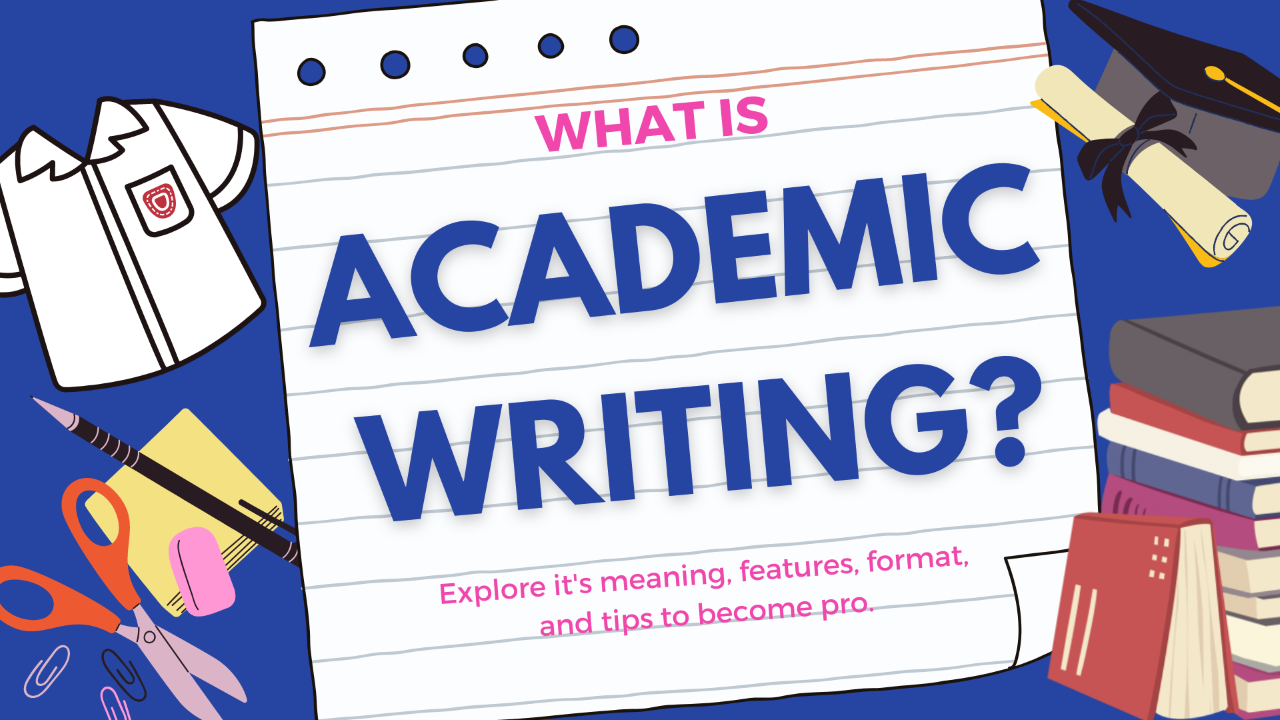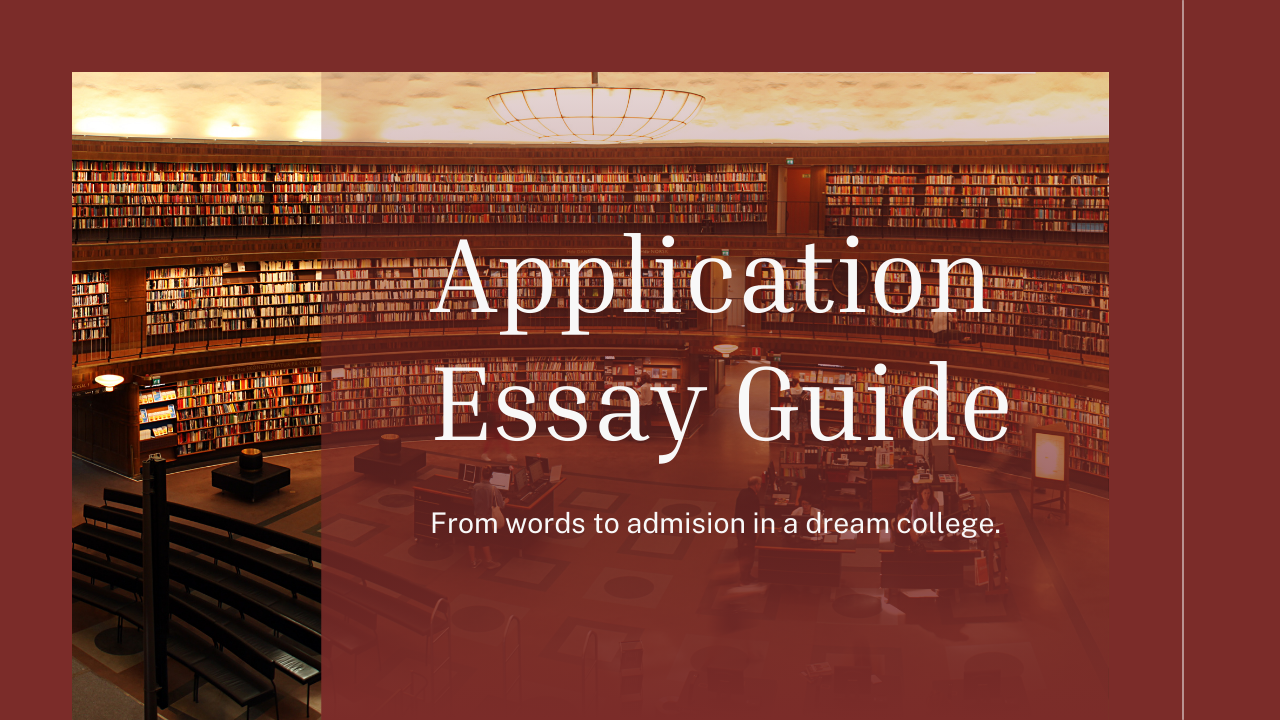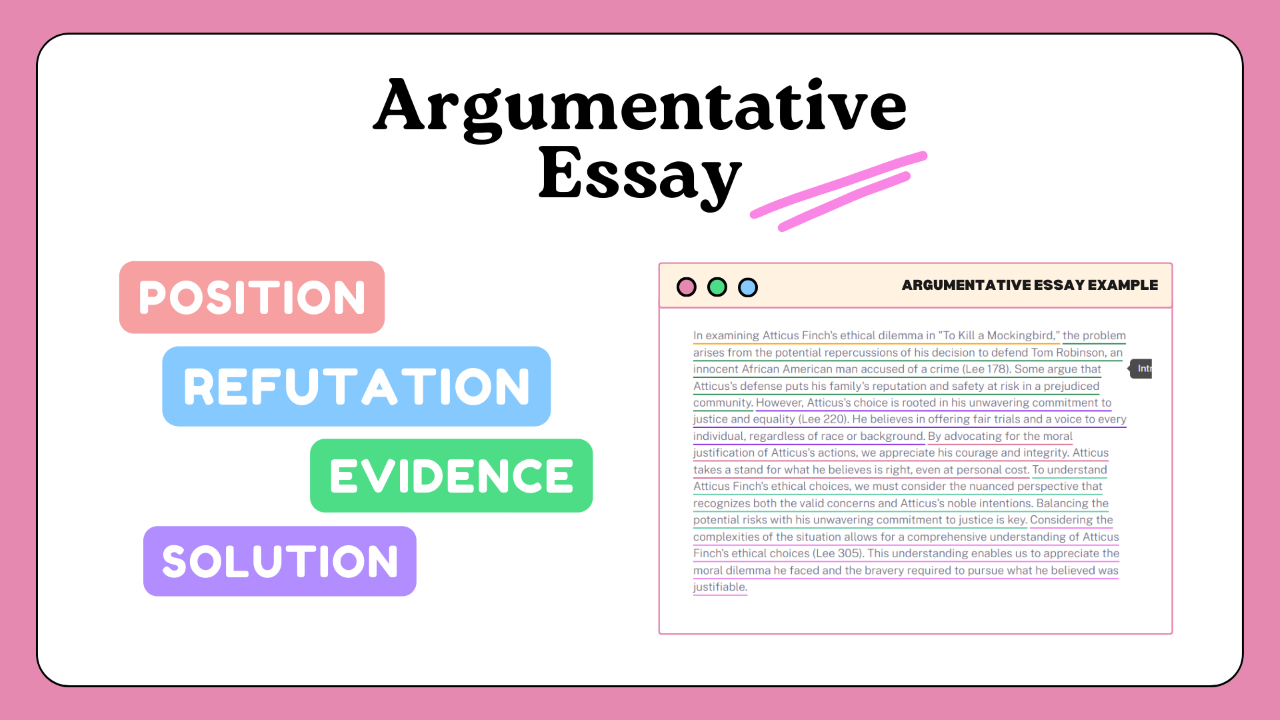
What is Academic Writing Style? Definition, Features, & Format
Academic writers often receive feedback regarding the "style" of their writing. However, understanding what style entails and how to identify it can be a challenge. Style holds significant importance in academic writing as it enables us to effectively communicate our message to a specific audience. This is particularly crucial in scientific and scholarly writing, encompassing various types of essays such as persuasive essay, narrative essay, expository essay, descriptive essay including research essays, dissertations and more. Precision and accuracy are vital in these forms of writing as they aim to communicate new discoveries, theories, critical analysis, and contribute to the advancement of knowledge in their respective fields. Nevertheless, style does not imply adhering to a specific format; instead, it involves utilizing language in a manner that effectively conveys meaning to the audience, regardless of their background knowledge.
This article serves as a valuable guide for beginners aspiring to write in an academic style, illuminating the crucial elements that distinguish academic writing. We will explore the definition of academic writing, provide insightful tips for improvement, discuss various types with few examples, and emphasize the importance of understanding some of the key features of academic writing language. Whether you're new to academic writing or an experienced academic writer, this comprehensive guide will equip you with the necessary skills and knowledge to navigate the intricacies of this style successfully, fostering confidence and achieving impactful outcomes.
What is Academic Writing: Definition
Academic writing is a frequently employed style that effectively conveys ideas, information, and research findings in a structured and formal manner. It sets itself apart from creative and personal writing by adopting a formal tone and avoiding slang, informal language, and abbreviations.
Maintaining proper structure is a key aspect of academic writing. This involves using concise and meaningful sentences to prevent clutter and ensure a logical flow of ideas. Clarity is also prioritized, favoring straightforward language over complex vocabulary and lengthy sentences. The primary aim of academic writing language is to inform and engage readers through precise and informative discourse, facilitating a clear understanding of the intended message.
The Purpose of Academic Writing: Demonstrating Analytical and Critical Thinking Skills
The purpose of academic writing is to facilitate the sharing of evidence-based knowledge among scholars, researchers, and students. It is a specific style of writing that adheres to prescribed rules and standards. This form of writing is predominantly found in scholarly essays, literature reviews, annotations, research papers, dissertations, journal articles, and more.
In academic writing, readers anticipate logical, concise, and well-organized paper. These standards are in place to ensure that your points are easily comprehensible. While academic writing may appear restrictive as it imposes limitations on the scope of a topic, it serves a valuable purpose. These guidelines compel you to focus on the most crucial aspects, eliminating anything irrelevant or insignificant.
The main objectives of academic writing are:
- To demonstrate analytical and critical thinking skills.
- To establish credibility and expertise in the subject matter.
- To effectively convey complex information with clarity and conciseness.
- To display a comprehensive understanding of relevant research literature.
By adhering to these objectives, academic writing serves as a tool for developing and showcasing intellectual capabilities, contributing to the advancement of academic knowledge within various disciplines.
Learning Academic Language: Key Features for Effective Scholarly Communication

Academic writing language encompasses a set of distinctive features that serve as the backbone of effective scholarly communication. By understanding and incorporating these features, you can navigate the realm of academia with confidence and precision. Let's explore the key features that elevate the quality and credibility of academic writing.
1 Clarity and Precision
Academic writing places a strong emphasis on clarity and precision in expressing ideas. This involves using clear and concise language to convey complex concepts, ensuring that readers can understand the intended message without ambiguity.
2 Formality
Formality is a key element of academic writing language, characterized by a professional and objective tone. It requires writers to avoid personal opinions, subjective language, and casual expressions. Instead, the emphasis is on presenting information in a formal manner, adhering to the conventions of academic discourse.
To be formal in writing, you should consider:
- Avoiding informal and slang language: Use formal vocabulary and avoid colloquialisms and slang commonly used in casual conversation.
- Maintaining grammatical accuracy: Ensure correct grammar and punctuation to uphold the standards of formal writing.
- Minimizing the use of conjunctions: While conjunctions like "and" or "but" are essential in everyday speech, academic writing often prefers more concise and direct language.
- Using clear and concise sentences: Write in a manner that is clear, straightforward, and free from unnecessary complexity.
By adhering to these guidelines, you can effectively convey your ideas in a formal and professional manner, contributing to the overall credibility and impact of your academic writing.
3 Objectivity
Objectivity is a crucial aspect of academic writing, ensuring a focus on facts, research, and evidence rather than personal biases or subjective feelings. Understanding the distinction between objective and subjective writing is essential in producing scholarly work.
Objective writing prioritizes factual information, research findings, and statistical data. It strives to present information that is grounded in reality and supported by reliable evidence. On the other hand, subjective writing revolves around personal judgments, opinions, and emotions.
To achieve objectivity in writing, consider:
- Avoiding personal statements: Steer clear of using phrases such as "I think," "I believe," or "I suggest." Instead, rely on statements that reference evidence, such as "evidence states that" or "previous research shows that."
- Minimizing personal pronouns: Refrain from using personal pronouns, as they can introduce subjectivity. Focus on presenting information in a more neutral and objective manner.
- Utilizing passive voice: Opt for passive voice sentences, such as "a survey was conducted," rather than "I conducted a survey," which can introduce personal bias.
- Referring to evidence and research: Use statements that reference existing evidence or research, such as "Many studies suggest that" or "According to recent research."
By practicing objectivity in writing, you enhance the credibility and reliability of your academic work, ensuring that your ideas are supported by evidence and contributing to a more rigorous and scholarly discourse.
4 Structure and Organization
One of the defining characteristics of academic writing lies in its inherent structure and organization. A well-structured academic essay holds an advantage over its unorganized counterpart. While it's important to note that not all academic pieces follow the same structure, essays, which serve as a fundamental form of academic writing, should possess a logical framework. This entails having clear introductions that set the stage, well-developed body paragraphs that substantiate arguments backed with credible sources, and concise conclusions that tie everything together. Each section serves a distinct purpose and contributes to the overall coherence of the writing, ensuring a seamless flow of ideas and enhancing the reader's understanding of the topic at hand.
5 Academic Writing Conventions and Disciplinary Norms
When engaging in academic writing, it is crucial to recognize that different academic disciplines have their unique conventions and norms. By understanding and adhering to these specific academic writing conventions, you can demonstrate your familiarity with the field and strengthen the credibility of your work. Here are some key points to consider:
- Discipline-Specific terminology: Each academic discipline has its own specialized vocabulary and terminology. It is important to use the appropriate terminology relevant to the subject area to ensure effective communication and convey expertise.
- Formatting guidelines: Academic writing often requires adherence to specific formatting guidelines. This can include the structure, the arrangement of headings and subheadings, or the use of citations and references. Following the prescribed formatting style recommended by the discipline or institution helps maintain consistency and readability.
- Preferred citation styles: Different disciplines may have preferred citation styles, such as APA, MLA, or Chicago, among others. Familiarize yourself with the citation style commonly used in your field and apply it consistently throughout your writing. Proper citation not only acknowledges the sources you have consulted but also adds credibility and integrity to your work.
- Academic integrity: Upholding principles of academic integrity is fundamental in academic writing. This includes avoiding plagiarism by properly citing and referencing all sources used in your work. Familiarize yourself with the conventions and norms related to academic integrity within your discipline to maintain the highest standards of ethical writing.
By adhering to academic conventions and disciplinary norms, you can demonstrate your commitment to the scholarly community and establish credibility within your respective academic fields. It reflects a level of professionalism and expertise that enhances the overall quality of academic writing.
6 Academic Writing in Research: Incorporating Evidence-Based Approach
Academic writing in research is characterized by an evidence-based approach that emphasizes the use of reliable sources and critical analysis. In this context, evidence refers to credible information derived from peer-reviewed articles, scholarly books, or reputable research studies. By integrating evidence into their writing, researchers can support their arguments and claims with substantiated information. This not only enhances the validity and credibility of their work but also contributes to the academic writing knowledge in various fields.
Academic writing in research relies on an evidence-based approach that involves the integration of credible sources to support arguments and claims. By utilizing evidence, researchers enhance the validity and credibility of their work, contributing to the advancement of knowledge and promoting intellectual growth in their respective academic fields.
Navigating Academic Writing Format: Citations and Referencing Styles

In academic writing, citations and references are essential components that serve to acknowledge the contributions of other scholars and maintain intellectual integrity. These elements ensure that you properly attribute the works you have consulted and adhere to disciplinary norms. Various citation styles, such as APA, MLA, Harvard, Chicago, Vancouver, AGLC, and VIU, exist to provide standardized formats for documenting sources and facilitating clear and accurate referencing.
Each type of academic writing style has its own specific standards and requirements. To ensure the best usage of these styles, it is advisable to consult the respective formatting guidelines. These guidelines provide detailed instructions on how to format your papers, including citation and reference formatting, in accordance with the specific style. Adhering to the appropriate style not only demonstrates your attention to detail but also enhances the clarity and credibility of your work.
By understanding the different types of academic writing styles, you can effectively acknowledge the ideas and information from other scholars while maintaining academic integrity. Consistency and accuracy in citing and referencing contribute to the overall quality and professionalism of your academic writing. Therefore, familiarizing yourself with the specific guidelines of the chosen citation style is crucial for producing well-structured and properly documented scholarly work.
1 APA Style:
APA (American Psychological Association) style is widely used in the social sciences and psychology disciplines for academic writing. It provides guidelines for formatting papers, citing sources, and creating a reference list, ensuring clarity, organization, and credibility in academic work. In-text citations in APA play a crucial role in acknowledging the sources used. When paraphrasing or summarizing information, including the author's last name and publication year allows readers to locate the full citation in the reference list.
It is important to maintain consistency between the text and reference list. Every work cited in the text must be included in the reference list, and every work listed in the reference list must be cited in the text. Both paraphrasing and direct quotations require proper citations to avoid plagiarism and give credit to the original source.
APA offers two common formats for in-text citations: parenthetical and narrative. Parenthetical citations enclose the author's name and publication date in parentheses, while narrative citations incorporate the author's name into the text and include the publication date in parentheses. Adhering to these citation formats ensures accurate attribution of sources in APA-style writing.
Let's explore some examples of APA 7th edition in-text citation styles using both formats:
Now that we have a good understanding of how to use in-text citations in APA style using different formats, let's explore some examples to reference the cited work in your text. We will examine three types of references, including a journal article, a book, and a chapter in an edited book. By familiarising ourselves with these examples, we can effectively apply the principles of APA style when creating our own reference list entries, maintaining consistency and accuracy in our academic writing.
Park, E. A. (2017). Why the networks can't beat Netflix: Speculations on the US OTT services market. Digital Policy, Regulation and Governance, 19 (1), 21-39. https://doi.org/10.1108/dprg-08-2016-0041
Bolland, E. J. (2017). Comprehensive strategic management: A guide for students, insight for managers. Emerald Publishing Limited. https://doi.org/10.1108/9781787142244
Kahneman, D., & Frederick, S. (2002). Representativeness revisited: Attribute substitution in intuitive judgement. In T. Gilovich, D. Griffin, & D. Kahneman (Eds.), Heuristics and biases: The psychology of intuitive judgment (pp. 49–81). Cambridge: Cambridge University Press.
2 MLA Style:
MLA (Modern Language Association) style is widely utilized in the humanities, encompassing fields such as literature, languages, and cultural studies. It offers a comprehensive set of guidelines for paper formatting, source citation, and compiling a list of sources in the reference or bibliography page. Effectively understanding and employing MLA style is essential in academic writing to ensure the work is original, coherent, well-documented, and scholarly.
In contrast to the APA style's author-date format for in-text citations, MLA employs an author-page format, and in certain cases, if the author’s name is not present, may include an abbreviated title with or without the page number, enclosed in parentheses. In MLA style, the inclusion of parenthetical citations is utilized to cite other authors' works, depending on the source medium (such as print, web, DVD), and incorporating the source’s registry in the reference list section, which appears immediately after the final paragraph of your paper.
When citing information from a single source successively without interruptions, a simplified in-text citation can be utilized, such as including only the page number e.g. (56). If the source employs a line, chapter, or scene numbering system instead of page numbers, use the corresponding label "line" followed by the line number or range. Longer labels like chapters "ch." and scenes "sc." should be abbreviated.
Now let’s explore some of the different examples of MLA in-text citations:
MLA references, referred to as the Works Cited page, prioritize the inclusion of comprehensive information about each source to ensure accurate identification and enable further investigation. A complete MLA 9th edition reference entry comprises nine essential elements. While every source type adheres to the same structure, the elements included may vary based on the specific source being cited.
Author. “Title of the Source”. Title of the Container, Other contributors, Version, Number, Publisher, Publication date, Location.
By adhering to the principles and guidelines of MLA style, writers can effectively integrate citations, maintain academic integrity, and contribute to the scholarly discourse in the field of literature, cultural studies, foreign languages and other areas in the humanities. It is crucial to master the proper usage of in-text citations to provide accurate attribution and avoid plagiarism.
Academic Writing Tips: Enhancing Scholarly Language Skills
Academic writing requires a unique set of language skills to effectively convey ideas, arguments, and research findings in a scholarly manner. To enhance your academic writing abilities, it is crucial to develop proficiency in academic vocabulary, essay structure, learning strategies, and seek the necessary help and guidance. Let’s explore some of the essential tips and strategies to strengthen your scholarly language skills and excel in academic writing.
Build Academic Writing Vocabulary:
- Expand your vocabulary by learning discipline-specific terms and phrases.
- Utilize academic resources such as dictionaries, glossaries, and online databases.
- Pay attention to the language used in academic papers and scholarly articles.
Master Essay Structure and Organization:
- Familiarize yourself with the standard essay structure, including introduction, body paragraphs, and conclusion.
- Develop the ability to create logical and coherent arguments.
- Use appropriate transition words and phrases to ensure smooth flow between paragraphs.
Embrace Continuous Learning:
- Engage in regular reading and research to expose yourself to different writing styles and academic disciplines.
- Take advantage of online courses, workshops, and tutorials that focus on academic writing.
- Seek feedback from professors, peers, or writing centers to improve your writing skills.
Seek Academic Writing Help:
- Consult writing resources, style guides, and manuals for guidance on academic writing conventions.
- Consider joining writing groups or workshops to receive constructive feedback and support.
- Use online writing tools and software to assist with grammar, spelling, and formatting.
Enhancing your scholarly language skills is an ongoing process that requires practice, dedication, and a commitment to continuous learning. By incorporating these tips into your academic writing practice, you will be better equipped to communicate your ideas effectively, demonstrate your understanding of the subject matter, and contribute to the scholarly discourse in your field. Remember, mastering academic writing is a valuable skill that will benefit your academic and professional endeavors.
Learning the conventions and language of academic writing is essential for anyone seeking to excel in their scholarly pursuits. This comprehensive guide has provided valuable insights into the definition and purpose of academic writing, highlighted its key features, and explored different writing styles such as APA and MLA. By implementing the academic writing tips and strategies shared in this resource, you can enhance your writing skills and effectively communicate your ideas in a scholarly manner. Remember to continually expand your academic vocabulary, familiarise yourself with essay structures, and seek help when needed. With this newfound knowledge and proficiency, you will navigate the world of academic writing with confidence and produce impactful outcomes. To further support your journey, feel free to explore the various academic style PDF paper examples available here, which exemplify the discussed concepts and provide practical illustrations. Need any further academic writing help from the experts for enhancing writing quality, get in touch today!
Free Sample Essays & Papers
Download free PDF examples of essays and papers in various subjects, all with different citation styles! Get inspired, conquer writer's block, and find the perfect format for your next assignment. Click to download now!




